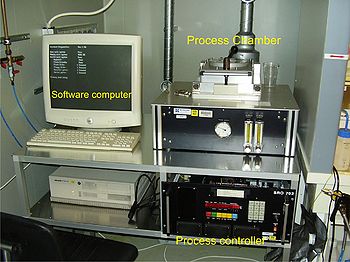Specific Process Knowledge/Thermal Process/BCB Curing Oven: Difference between revisions
Appearance
| Line 5: | Line 5: | ||
The BCB Curing Oven is mainly used for curing of BCB (bisbenzocyclobutene) and for alloying of metal in a nitrogen atmosphere. | The BCB Curing Oven is mainly used for curing of BCB (bisbenzocyclobutene) and for alloying of metal in a nitrogen atmosphere. | ||
During processing the furnace is rapidly heated by use of five halogen lamps below the sample. The furnace is purged with a | During processing the furnace is rapidly heated by use of five halogen lamps below the sample. The furnace is purged with a high or a low nitrogen flow, and there is vacuum on the furnace. | ||
'''The user manual, user APV, technical information and contact information can be found in LabManager:''' | '''The user manual, user APV, technical information and contact information can be found in LabManager:''' | ||
Revision as of 09:51, 3 December 2012
This page is under contruction
BCB Curing Oven
The BCB Curing Oven is mainly used for curing of BCB (bisbenzocyclobutene) and for alloying of metal in a nitrogen atmosphere.
During processing the furnace is rapidly heated by use of five halogen lamps below the sample. The furnace is purged with a high or a low nitrogen flow, and there is vacuum on the furnace.
The user manual, user APV, technical information and contact information can be found in LabManager:

Process information
There are no standard processes on the furnace.
| Equipment | Resist Pyrolysis Furnace | |
|---|---|---|
| Purpose |
| |
| Process parameter range | Temperature |
|
| Nitrogen flows |
| |
| Substrates | Batch size |
|
| Allowed materials |
| |
